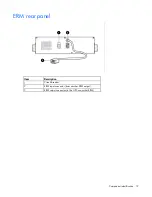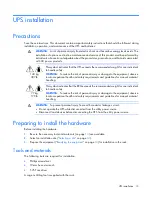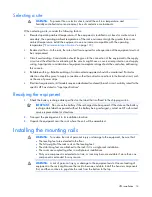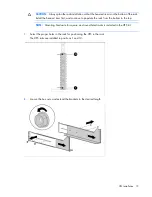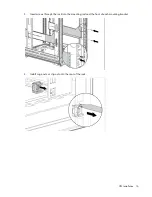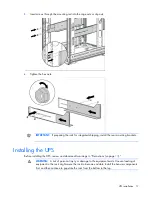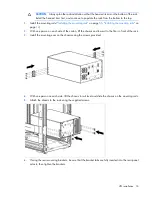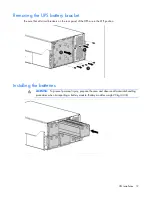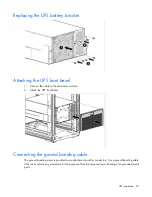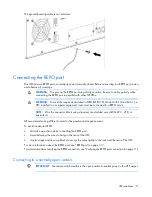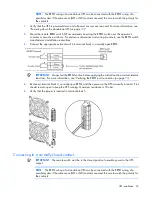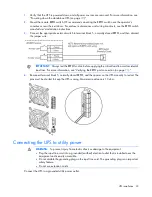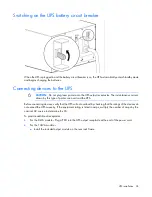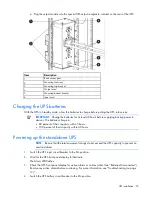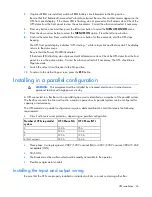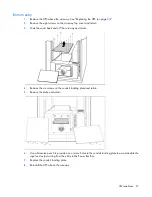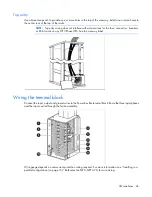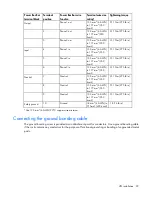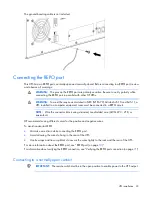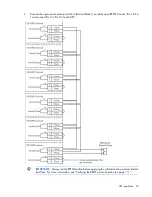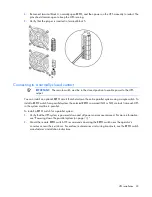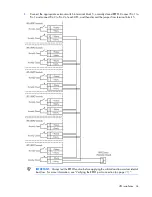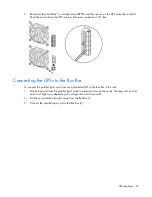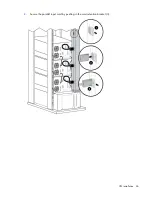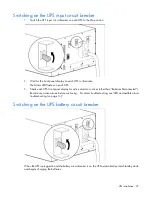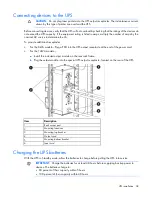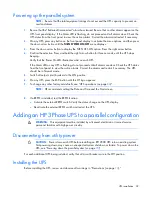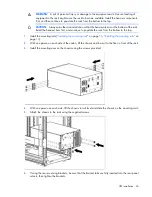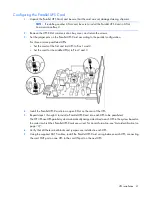
UPS installation 26
5.
If optional ERMs are installed, switch all ERM battery circuit breakers to the On position.
Be sure that the "Batteries Disconnected" alarm has cleared. Be sure that no other alarms appear on the
UPS front panel display. If the Alarm LED is flashing, do not proceed until all alarms clear. Check the
UPS status from the front panel to view the active alarms. Correct the alarms and restart if necessary.
6.
Press any button once and then press the left arrow button to select the
TURN UPS ON/OFF
menu.
7.
Press the down arrow button to select the
TURN UPS ON
option. Press the left arrow button.
8.
Confirm the selection. Press and hold the left arrow button for three seconds, until the UPS stops
beeping.
The UPS front panel display indicates "UPS starting..." while relays click and the fans start. The display
returns to the status menu.
Be sure that the Power On LED illuminates.
If the Alarm LED is flashing, do not proceed until all alarms are clear. Check the UPS status from the front
panel to view the active alarms. Correct the alarms and restart if necessary. The UPS should be in
Operate mode.
9.
Switch the output circuit breaker to the On position.
10.
To return to the default logo screen, press the
ESC
button.
Installing in a parallel configuration
WARNING:
This equipment must be installed by a licensed electrician or trained service
personnel familiar with high-power circuitry
A UPS connected to a Bus Bar with a paralleling line cord is identified as a member of the parallel system.
The Bus Bar connects the line and load to a common power bus. A parallel system can be configured for
capacity or redundancy.
The UPS models in a parallel configuration require a dedicated branch circuit that meets the following
requirements:
•
Circuit with overcurrent protection, depending on parallel configuration:
Number of UPSs in parallel
system
HP 3 Phase NA HP 3 Phase INTL
3
150 A
75 A
4
200 A
100 A
5
225 A
125 A
6 (N+1 system)
225 A
160 A
•
Three-phase, 4-wire plus ground, 208 Y/120 V nominal (NA) or 400 Y/230 V nominal, 380-415 VAC
acceptable (INTL)
•
50/60 Hz
•
The breaker must be wall-mounted and be readily accessible to the operator
•
Flexible or rigid metal conduit
Installing the input and output wiring
Be sure that the UPSs are properly installed in individual rail kits in a rack containing a Bus Bar.

